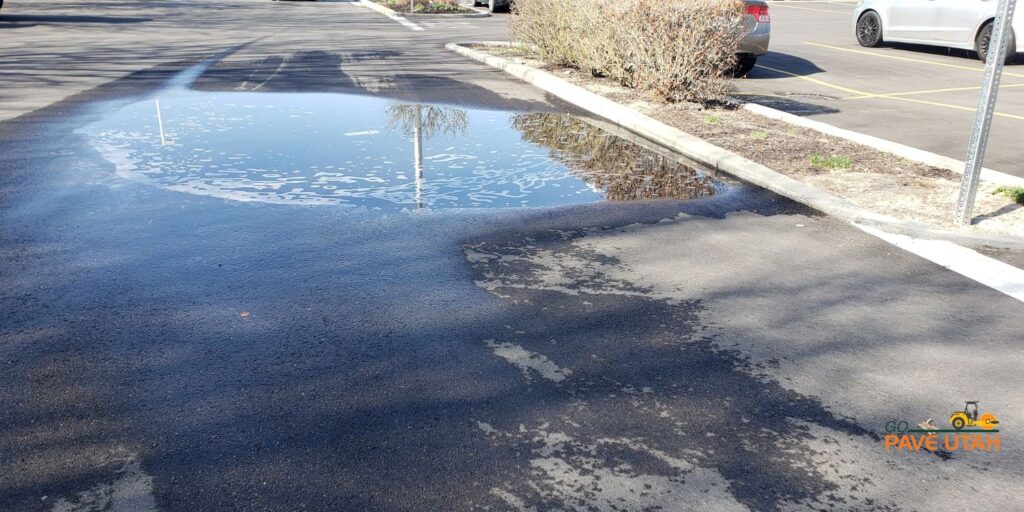
Drainage is one of the most overlooked factors in asphalt longevity—especially in Utah’s unpredictable climate. For commercial property owners and managers, surface appearance is only part of the story. What happens below the asphalt can quietly damage the integrity of the entire structure, leading to costly failures if not addressed early.
When water sits on the surface of your asphalt—whether from snowmelt, heavy rain, or overwatering nearby landscaping—it doesn’t just disappear. If the slope is too flat or the lot lacks proper drainage features, that water begins to seep into cracks or along the edges of the pavement. Once underneath, it softens the subgrade, the foundational layer responsible for structural support.
Over time, a weakened subgrade leads to more flexing in the asphalt above. This can result in rutting, depressions, and eventually large-scale surface failure. According to Pavement Interactive, surface drainage design is one of the most important considerations in preventing water-related damage. Even a 1–2% slope can make a measurable difference in diverting runoff and preserving structural integrity.
Utah's climate introduces another layer of complexity—temperature swings that repeatedly freeze and thaw water throughout the year. When water trapped under or inside the asphalt freezes, it expands, forcing cracks to widen and heaving the pavement. When it melts, it creates voids that further destabilize the subgrade.
This freeze-thaw action is one of the leading causes of potholes and structural asphalt failure. Even well-maintained pavement can fail prematurely if it lacks proper drainage to prevent water accumulation. These cycles are especially common in northern and high-elevation regions of Utah, where temperature shifts are frequent and severe.
Not all drainage issues are obvious from the surface, but property managers should be aware of key indicators:
If these symptoms are appearing, the issue may not be just surface-level—it could be structural asphalt failure.
Proper grading, drainage planning, and asphalt installation all play a role in keeping your asphalt sound. That’s where Go Pave Utah comes in. Their team specializes in identifying underlying drainage issues and designing asphalt solutions that are built to last in Utah’s unique conditions. Whether it’s correcting slope, improving runoff flow, or replacing damaged pavement, Go Pave Utah offers services tailored to commercial and business properties.
Water doesn’t need much of an opening to start damaging your asphalt. With expert help and proactive planning, you can stay ahead of the problems you can’t always see—starting below the surface.